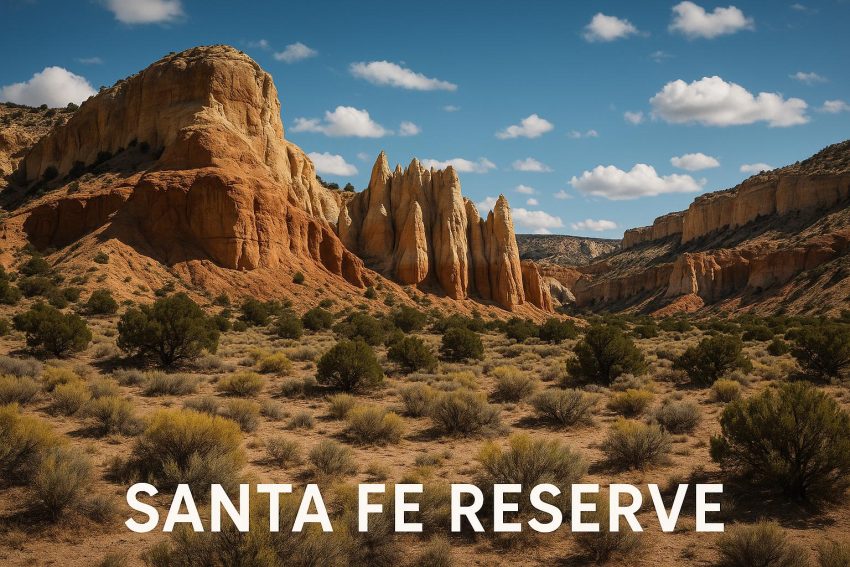Overview of Santa Fe Reserve
The Santa Fe Reserve is a significant conservation area known for its remarkable biodiversity and picturesque landscapes. Situated in the southwestern part of the United States, this reserve is home to a variety of ecosystems ranging from forests and grasslands to rugged mountains, making it a haven for nature enthusiasts and researchers alike.
Geographical Location and Features
Located near the city of Santa Fe, New Mexico, the Santa Fe Reserve is characterized by its diverse topography, which includes high-altitude mountains and expansive desert plains. As part of the Southern Rocky Mountains, this region provides a unique blend of alpine and desert environments. The landscape features dramatic canyons, meandering rivers, and ancient geological formations that create a stunning backdrop for visitors.
The elevation in the reserve varies significantly, offering a range of climatic conditions and ecological niches. This variation in altitude contributes to the reserve’s diverse ecosystems, each supporting unique communities of plants and animals. Visitors can explore the mixed-conifer forests at higher elevations or wander through the arid grasslands and shrublands found at lower altitudes.
Flora and Fauna
The Santa Fe Reserve is a sanctuary to an array of flora and fauna, making it an important area for conservation and study. The vegetation primarily includes pinyon-juniper woodlands and ponderosa pine forests. These plant communities are adapted to withstand the area’s varied climate and provide critical habitat for a multitude of wildlife species.
Among the fauna inhabiting the reserve are mule deer and black bears, which roam the forests and meadows in search of food and shelter. The presence of these large mammals indicates a healthy and well-balanced ecosystem. Additionally, the reserve hosts a rich diversity of bird species, ranging from raptors to songbirds. Bird watchers can encounter species such as the western bluebird, Steller’s jay, and the majestic hawks that soar above the treetops.
The Santa Fe Reserve is also home to smaller mammal species, reptiles, and amphibians that thrive in its diverse habitats. Coyotes, bobcats, and foxes are known to inhabit the area, contributing to the complex food web that sustains the ecosystem. Reptiles and amphibians, such as lizards and toads, are often found in the warmer, lower-elevation regions where they can bask in the sun.
Ecological Importance
The Santa Fe Reserve plays a vital role in conserving regional biodiversity and acts as a refuge for species adapted to high-altitude and arid conditions. This conservation is crucial for the ecological balance of the area. The reserve’s diverse habitats offer a living laboratory for research and education on ecological conservation.
By preserving a mosaic of habitats, the Santa Fe Reserve helps ensure the survival of numerous plant and animal species that are threatened by habitat destruction elsewhere. The interconnected ecosystems within the reserve provide essential services such as water filtration, carbon sequestration, and soil stabilization, which benefit both the natural environment and human communities.
Researchers and conservationists study the interactions between species and their environments within the reserve to gain insights into ecosystem dynamics and the impacts of climate change. The knowledge gained from these studies informs management practices and conservation strategies, helping to maintain the health and resilience of the reserve’s ecosystems for future generations.
Visitor Information
The Santa Fe Reserve is open to the public, offering a range of recreational activities such as hiking, bird watching, and nature photography. Visitors are encouraged to explore the trails and discover the natural beauty of the area while adhering to conservation guidelines to preserve the reserve’s pristine environment.
Hiking enthusiasts will find a network of trails that cater to varying levels of difficulty, from leisurely strolls to challenging treks. Bird watchers can bring their binoculars and cameras to capture the many avian species that inhabit the area. Nature photographers will appreciate the breathtaking landscapes and diverse wildlife that provide ample opportunities for stunning photographs.
To enhance the visitor experience, informational signage along the trails provides educational insights into the area’s geology, ecology, and cultural history. Visitors are reminded to respect wildlife, adhere to designated trails, and practice Leave No Trace principles to minimize their impact on the environment.
For more information on the reserve, including trail maps, visitor guidelines, and any seasonal advisories or closures, visitors can refer to the official website of the Santa Fe National Forest. Here, they can gather essential information to help plan a safe and enjoyable visit.
In summary, the Santa Fe Reserve stands as a critical ecological area, offering unique landscapes and a diverse array of species. Efforts to conserve its habitats are essential for sustaining the natural heritage of this region. The reserve provides an invaluable opportunity for individuals to connect with nature, gain an understanding of ecological principles, and contribute to the ongoing preservation of this remarkable area.

